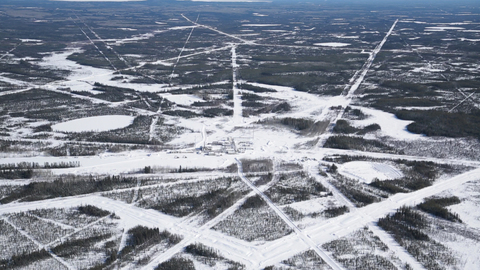Climate & Clean Energy | Blogs | David Suzuki Foundation –
A report released today by the David Suzuki Foundation shines a light on industrial development in the Peace Region of Northeastern British Columbia. The alarming impact of development, which is happening on a scale unparalleled in Canada, is affecting the lives and well-being of local First Nations and non-aboriginal farming communities in the booming region.
This sensitive region of northern farmland and forest is under intense pressure from oil and gas pipelines, logging, mines, fracking and a proposed third large dam on the Peace River, that if built would flood over 3,400 hectares of prime farmland. This would be the biggest loss of farmland from B.C.’s renowned Agricultural Land Reserve in its history.
A joint federal and provincial Environmental Assessment Panel is touring the Peace Region to hear from citizens in Fort St. John, Hudson’s Hope, Chetwynd, Prince George and other northern communities on whether the Site C Dam should be built. I’ll be in Fort St. John later this week to present the foundation’s latest report to the Joint Review Panel.
I plan to tell the EA Panel that the report’s science corroborates what local people have been saying for years: their lives and livelihoods have already been dramatically affected by industrial development and this will only get worse if the Site C Dam is approved.
Indeed, analyses of satellite images presented in our study reveal that over two-thirds of the Peace is what Dane-zaa elder May Apsassin calls “broken country” for communities and the wildlife they rely on, including threatened species such as caribou and grizzly.
Our study reports that there are 16,267 oil and gas wells, 28,587 kilometres of pipeline, 45,293 kilometres of roads and 116,725 kilometres of seismic lines packed into the Peace Region. If laid end-to-end, this infrastructure would wrap around the planet an astonishing four-and-a-half times!
Several years ago, I stood with hundreds of people on the grounds of the B.C. legislature as First Nations leaders from the Peace Region delivered a joint declaration opposing the Site C Dam proposal to the government. The declaration asked that the cumulative impacts of industrial development be looked at before the Site C Dam is ever considered. Sadly, the First Nations plea was ignored.
Our study shows that First Nations’ concerns about the pace of development on their lands, as well as about new projects like Site C, were warranted.
The Peace Region has borne the brunt of our growing appetite for oil and gas, timber, minerals and hydroelectric power for too long. At some point we must ask ourselves how much development is too much, and respect the wishes of local communities to say no to more mega-projects, like the Site C Dam, so they can finally live in peace.
(c) Climate & Clean Energy | Blogs | David Suzuki Foundation – Read entire story here.
